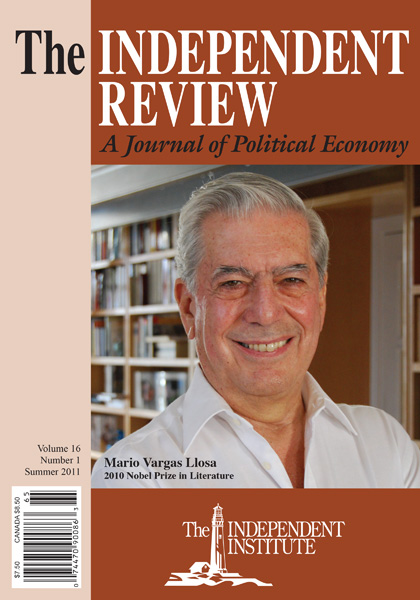Nouriel Roubini and Stephen Mihm rightly castigate the Federal Reserve and other central banks for policies that contributed to the recent worldwide housing boom and bust, but they seriously underestimate the role of the Community Reinvestment Act and the government-sponsored enterprises in facilitating the surge of subprime mortgage loans in the United States. In addition, their proposals to prevent future financial crises rest on errors about the repeal of the Glass-Steagall Act and other matters of economic history.
Article
It takes only three paragraphs for Nouriel Roubini and Stephen Mihm, the authors of Crisis Economics: A Crash Course in the Future of Finance, to tell how Roubini stunned listeners at a September 2006 International Monetary Fund seminar by heralding a “once-in-a-lifetime” housing bust to be followed by a deep, long recession (Roubini and Mihm 2010, 1–2). Yet they may still deserve credit for modesty, for if one devoted Roubini watcher is to be believed, “Dr. Doom” actually predicted no fewer than “48 of the last 4 recessions” (comment on Elfenbein 2009). Some quick fact-checking lends credence to our informant’s otherwise incredible claim by showing that Roubini predicted a serious crash for 2004, then a severe slowdown for 2005, then a global reckoning for 2006, and finally a sharp recession for 2007. After the much-trumpeted crisis at last materialized (though not quite for the reasons Roubini had harped on), he declared that the S&P 500 would sink to 600, that oil would get stuck below $40 a barrel, and that a gold “bubble” was about to do what the housing one had done. To be sure, these things have not yet come to pass, but tomorrow is another day, and to succeed prophets need only mark when they hit and never mark when they miss.
If Roubini’s marksmanship impresses you, you are perhaps bound to hang on every word of Crisis Economics, no matter what any less-than-divine reviewer says about it. If, on the other hand, that marksmanship puts you in mind of the accuracy of a stopped clock, you may hearken to the warning that although the book’s assessment of the causes of the recent great housing boom and bust is for the most part sound and informative, some of its claims are highly misleading, if not simply false. Roubini and Mihm start well enough by dismissing as red herrings various popular diagnoses of the crisis, including the “tired” argument that it was caused by “greed,” with its far-fetched though implicit assumption “that the financiers of 2007 were greedier than the Gordon Gekko’s of a generation ago” (pp. 31–32). They draw attention instead to changes in the structure of incentives “that channeled greed in new and dangerous directions” (p. 32). These changes included government policies aimed at increasing poorer (and riskier) persons’ access to mortgages, the growing moral hazard connected with the “too big to fail” doctrine, and the Federal Reserve’s post-2001 easy-money policy.
| Other Independent Review articles by George A. Selgin | |
| Fall 2013 | The Financial Crisis and the Free Market Cure: Why Pure Capitalism Is the World Economy’s Only Hope |
| Spring 2010 | Central Banks as Sources of Financial Instability |
| Summer 2000 | Should We Let Banks Create Money? |










